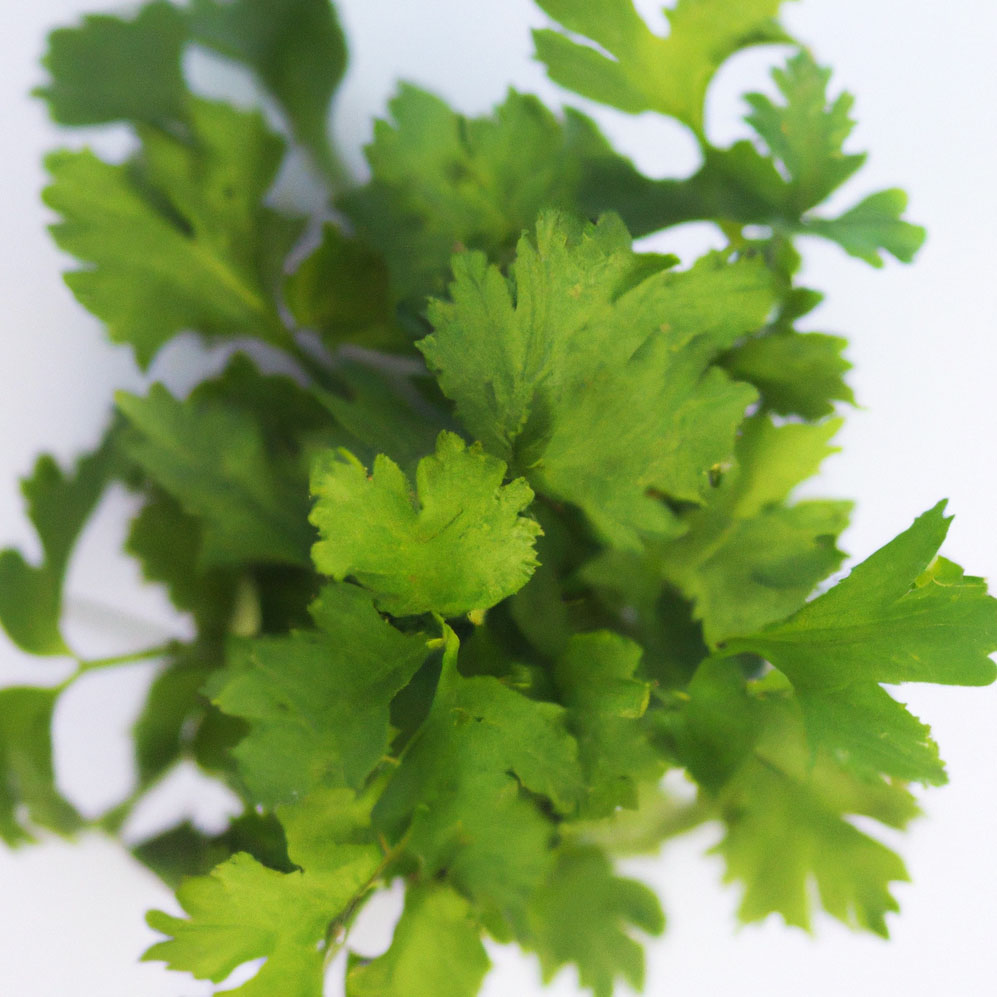Botanical Name: Coriandrum sativum
Also Called: Coriander leaves or Chinese parsley
Cilantro is a versatile and highly aromatic herb that is widely used in global cuisines. Native to the Mediterranean and parts of southwestern Asia, cilantro is now cultivated around the world and is a key ingredient in Latin American, Asian, Middle Eastern, and Indian dishes. Cilantro is the leafy part of the coriander plant, while the seeds of the plant are known as coriander, commonly used as a spice.
Cilantro has a bright, citrusy flavor with a slight peppery undertone. The leaves are tender and green, resembling flat-leaf parsley, though with a more distinct flavor. Cilantro’s taste is fresh and somewhat pungent, which makes it a popular herb for adding brightness to dishes. However, the herb has a polarizing reputation—while many people enjoy its fresh flavor, a small percentage of the population perceives cilantro as having a soapy taste due to genetic factors that affect taste receptors.
Cilantro is used in a wide range of dishes, from fresh salsas to curries and soups. In Latin American and Mexican cuisine, cilantro is a key ingredient in dishes like guacamole, salsa verde, and pico de gallo. It is often added at the end of cooking to maintain its fresh flavor and color. Cilantro pairs particularly well with citrus, chiles, garlic, and onions, making it an essential part of marinades, sauces, and garnishes for tacos, burritos, and grilled meats.
In Asian cuisine, cilantro is commonly used in Thai, Vietnamese, and Indian dishes. It is often sprinkled over curries, stir-fries, and noodle dishes or added to soups like pho and tom yum. In Indian cuisine, cilantro is frequently used as a garnish for dal, curries, and rice dishes, and its leaves are blended into chutneys and sauces for added flavor and freshness.
Cilantro is also prominent in Middle Eastern cooking, where it adds brightness to salads, dips like hummus, and grilled meats. It’s often paired with lemon and garlic in these dishes to enhance its citrusy notes.

